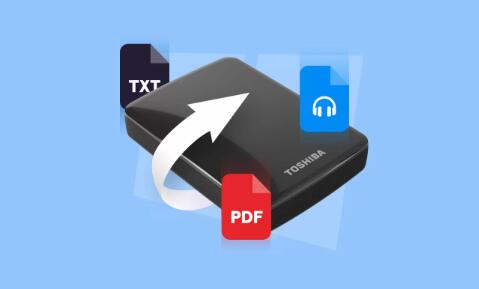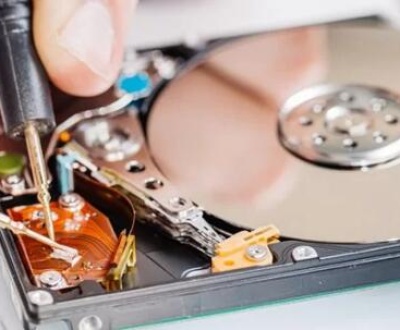Losing files from an external hard drive can be a frustrating experience, whether it’s due to accidental deletion, formatting, or other unforeseen issues. Fortunately, there are ways to recover deleted files if you act quickly and follow the right procedures.
File Deletion
When you delete a file from your external hard drive, it’s typically not erased immediately. Instead, the operating system marks the space as available for new data. Until new data is written over this space, recovery is possible. Hence, it’s crucial to stop using the drive immediately after realizing files are missing.
Step-by-Step Recovery Process
1. Stop Using the Drive
As soon as you realize that files are deleted, disconnect the external hard drive from your computer. Avoid writing new data to the drive, as this can overwrite the space where the deleted files are stored.
2. Check the Recycle Bin (Windows) or Trash (Mac)
Before jumping into recovery software, check your Recycle Bin (Windows) or Trash (Mac). If the deleted files were moved there, you can easily restore them.
Windows: Open the Recycle Bin, find the files, right-click, and select Restore.
Mac: Open Trash, locate the files, right-click, and select Put Back.

3. Use File History (Windows)
If you have File History set up on Windows, you can recover previous versions of files.
Right-click on the folder where the deleted files were located.
Select Restore previous versions.
Choose a version that contains your files and click Restore.
4. Use Time Machine (Mac)
For Mac users with Time Machine enabled, recovering files is straightforward.
Connect your external hard drive.
Click on the Time Machine icon in the menu bar and select Enter Time Machine.
Navigate to the date before the deletion, find the files, and click Restore.
Using Data Recovery Software
If the above methods do not work, you may need to use data recovery software. Below are several reliable options, along with instructions on how to use them.
1. Choosing Data Recovery Software
Welcome to the world of Panda Assistantyour ultimate ally in the realm of data recovery! Imagine a vibrant companion that transforms the daunting task of recovering lost files into a seamless experience, full of flair and confidence. Panda Assistant is not just software; it’s a dynamic force designed to empower users with cutting-edge technology and user-friendly features. Whether you’re facing the heartbreak of deleted photos, vital documents, or critical data, Panda Assistant is here to restore hope.
With its sleek interface and powerful algorithms, Panda Assistant dives deep into your storage devices, unearthing treasures you thought were lost forever. From external hard drives to SD cards, this innovative tool caters to all your data recovery needs. Plus, its robust features are coupled with an engaging user experience that makes every step feel effortless.
Join the countless satisfied users who have discovered the magic of Panda Assistant. With our commitment to excellence and reliability, you can trust that your data is in the best hands. Experience the flamboyance of effective recovery today, and let Panda Assistant bring your lost files back to life!
2. Installing the Software
Download the chosen data recovery software from its official website.
Install it on a different drive (not the external hard drive) to avoid overwriting data.
3. Scanning for Deleted Files
Open the Software: Launch the data recovery software you installed.
Select the External Hard Drive: Choose your external hard drive from the list of available drives.
Start the Scan: Initiate the scan process. This can take some time, depending on the drive size and the software used.
4. Reviewing the Results
Once the scan is complete, the software will display a list of recoverable files.
Filter Options: Use filters to narrow down the results by file type or date.
Preview Files: Most software allows you to preview files before recovery to ensure they are intact.
5. Recovering Files
Select Files to Recover: Mark the files you want to recover.
Choose Recovery Location: Specify a recovery location on a different drive to prevent overwriting any data.
Start the Recovery: Click the recover button to retrieve your selected files.
6. Verify Recovered Files
Once recovery is complete, check the files to ensure they are intact and usable.
Additional Recovery Tips
1. Avoid Overwriting Data
To maximize recovery chances, refrain from saving new files to the external hard drive. Always recover files to a different location.
2. Keep Backups
Implement a regular backup routine using cloud storage or external drives to prevent data loss in the future. Tools like Windows File History, Mac Time Machine, or third-party backup software can help automate this process.
3. Regularly Check Drive Health
Monitor your external hard drive’s health using tools like CrystalDiskInfo (Windows) or Disk Utility (Mac) to identify potential issues before they lead to data loss.
Advanced Recovery Methods
If software recovery methods fail, you might consider professional data recovery services. These services are often costly but can be worth it for critical data recovery. Look for reputable data recovery companies in your area that specialize in external hard drive recovery.
About us and this blog
Panda Assistant is built on the latest data recovery algorithms, ensuring that no file is too damaged, too lost, or too corrupted to be recovered.
Request a free quote
We believe that data recovery shouldn’t be a daunting task. That’s why we’ve designed Panda Assistant to be as easy to use as it is powerful. With a few clicks, you can initiate a scan, preview recoverable files, and restore your data all within a matter of minutes.
Subscribe to our newsletter!
More from our blog
See all postsRecent Posts
- Data recovery salt lake city utah 2025-04-18
- Data recovery sacramento 2025-04-18
- Data recovery miami 2025-04-18

 Try lt Free
Try lt Free Recovery success rate of up to
Recovery success rate of up to









